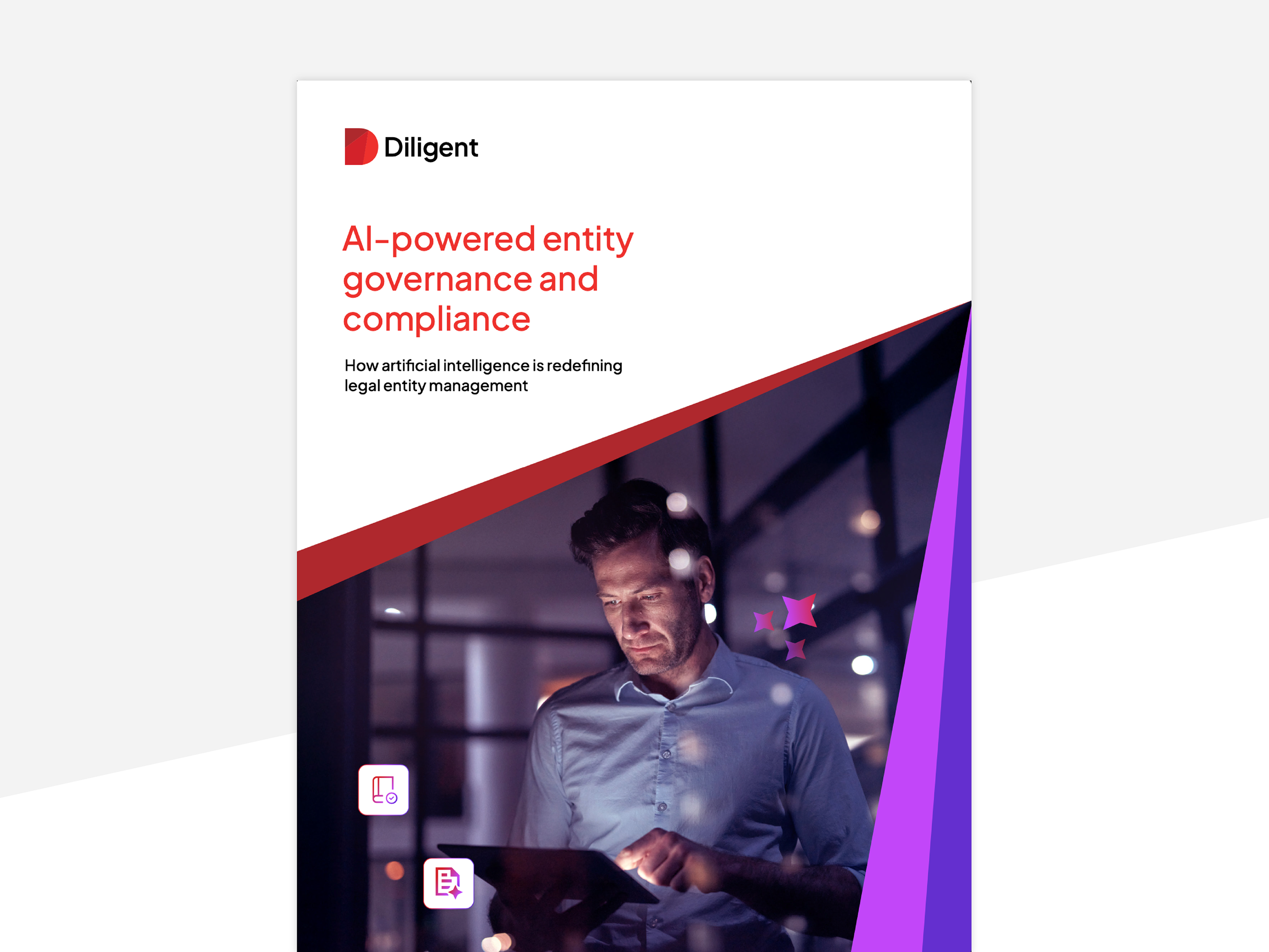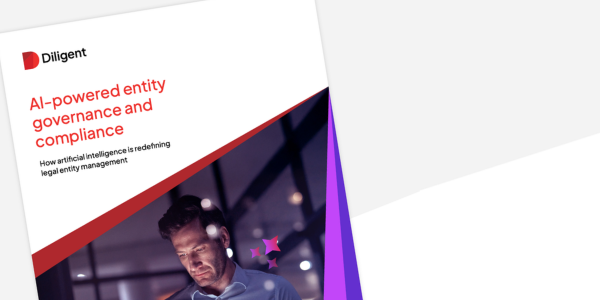How entity management software helps optimize tax efficiency and supports business growth

When most people think of entity management software, they think of legal and compliance teams — managing filings, updating governance records and keeping entities in good standing. But today’s integrated governance, risk and compliance (GRC) platforms have evolved into far more everyday tasks and workflows than those owned by the legal team alone.
Entity and subsidiary management technology now serves as the operational backbone for a wide range of strategic activities — none more so than in tax and finance. Whether it's modeling corporate structures for tax efficiency, preparing for M&A, reducing risk or maintaining audit readiness, access to accurate, centralized entity data is essential.
Yet many companies still rely on outdated tools like spreadsheets and siloed systems, which create inefficiencies, errors and blind spots. One study found that 94% of business spreadsheets contain errors. Even the most carefully maintained records degrade over time — with entity data becoming outdated at a rate of up to 25% per year.
Digital entity management — now enhanced with AI — offers a smarter approach. It unifies corporate records, streamlines compliance and gives legal, finance and tax teams a real-time view of corporate structure and obligations. AI takes this even further by automating reporting, validatingdata and surfacing insights that would otherwise take hours to uncover.
As regulations grow more complex and financial decisions more interconnected, tax and finance teams are turning to these systems for much more than compliance. A centralized platform creates a single source of truth — one that supports interdepartmental collaboration and enables faster, more confident decision-making. With all stakeholders accessing the same real-time data, the business can avoid costly missteps like duplicate filings, tax overpayments or missed structuring opportunities.
With that in mind, below we uncover five key ways is which AI-powered entity management supports tax and finance efficiency.
1. Centralize corporate records to improve tax planning
Fragmented entity data makes tax strategy harder than it should be. A centralized platform reduces duplication, improves audit readiness and provides a reliable foundation for assessing tax positions across jurisdictions.
Finance and tax teams benefit from knowing they’re working with the most current data — enabling them to evaluate structures, track ownership and support regulatory filings with confidence.
2. Automate compliance tracking and e-filing
Manually managing tax and regulatory deadlines across jurisdictions is time-consuming and high-risk. With AI-enabled calendars, automatic reminders and e-filing tools, teams can stay ahead of obligations without constant oversight.
Instead of managing deadlines in spreadsheets, they receive jurisdiction-specific prompts and updates — reducing the risk of missed filings, late penalties and last-minute scrambles.
AI is changing entity management...
AI isn’t just making entity management more efficient — it’s redefining what legal, tax and compliance teams can do and accomplish altogether. Get the guide to find out how.
Yes, I'll have a copy!3. Use real-time org charting to support M&A and restructuring
Entity charts are essential for understanding how corporate structures relate across borders — especially during M&A or internal restructuring. But for large organizations, keeping charts current can be a huge lift.
With automated, AI-enhanced org charting, finance and legal teams can generate real-time diagrams that reflect the most recent data — making it easier to evaluate restructuring scenarios, understand beneficial ownership and support due diligence processes.
4. Accelerate insights with AI assistant and document summarization
New AI tools like a dedicated, virtual entity management assistant can act like an intelligent researcher for legal, tax and finance teams — instantly surfacing the right entity data with simple prompts. Need to confirm director appointments, see ownership details or prep for a board meeting? Just ask!
Meanwhile, AI-powered summarization capabilities save hours of reading by pulling out key points from governance documents, filings or contracts. Instead of sifting through PDFs or legal text, teams get instant clarity on what matters.
5. Strengthen data quality with AI-powered validation and import
Accurate data is critical to reducing financial risk and enabling smart decisions. With an AI data integrity checker, the system flags missing or outdated fields — like incomplete addresses, expired director terms or mismatched ownership structures — so issues can be resolved proactively.
AI-powered document importing takes this a step further by scanning uploaded documents, extracting key data and auto-populating entity records. It can even suggest next actions, like initiating a board resolution or triggering a compliance task — reducing the burden on busy teams.

Why tax and finance leaders are embracing AI-powered entity management
Adopting modern entity management is no longer just about staying compliant — it's about gaining a competitive edge. Forward-thinking companies are already seeing the value:
- Reduce financial and regulatory risk with complete, accurate data
- Make faster decisions with real-time access to corporate structures and ownership
- Support tax efficiency by identifying restructuring or planning opportunities
- Improve M&A readiness with clean, accessible records
- Free up time for strategic work by eliminating manual processes
The bottom line? Entity management software has evolved. It's no longer 'just' a compliance tool — it's a strategic system that supports tax optimization, operational efficiency and risk management. And with AI now layered on top, the potential impact is even greater.
Ready to see what’s possible with entity management software? Download the guide to AI-powered entity management and discover how you can harness AI to reduce risk, unlock efficiencies and drive growth.
To learn more about Diligent Entities’ current AI capabilities and future roadmap, request a demo today.
More to explore

How AI is redefining legal entity management
Discover how AI-powered entity management tools boost efficiency, reduces risk and supports smarter decisions across legal, tax and compliance teams.

Outsourcing vs. automation: Why entity management tech beats outside counsel
Explore how entity management software outperforms outside legal counsel by centralizing data, automating processes, and enhancing efficiency and accuracy.

Breaking down silos: How legal operations can drive enterprise-wide collaboration
Legal teams as strategic partners: centralize data, improve compliance, and drive efficiency across departments with entity management software
